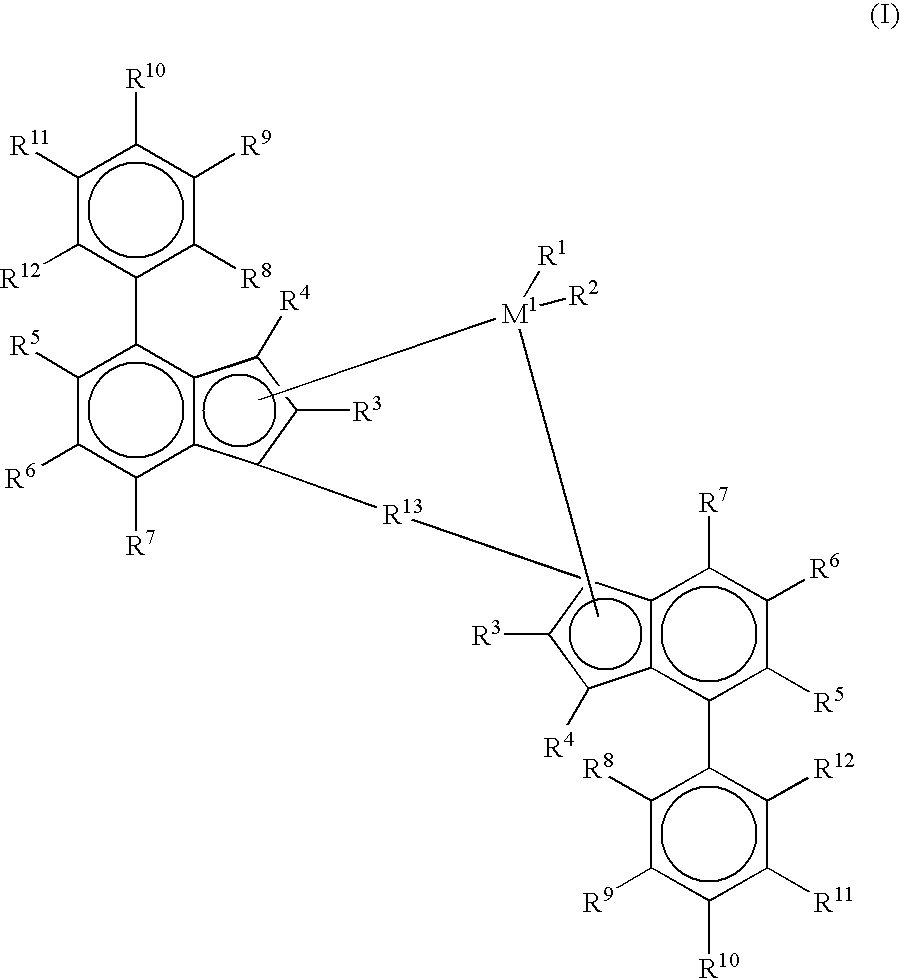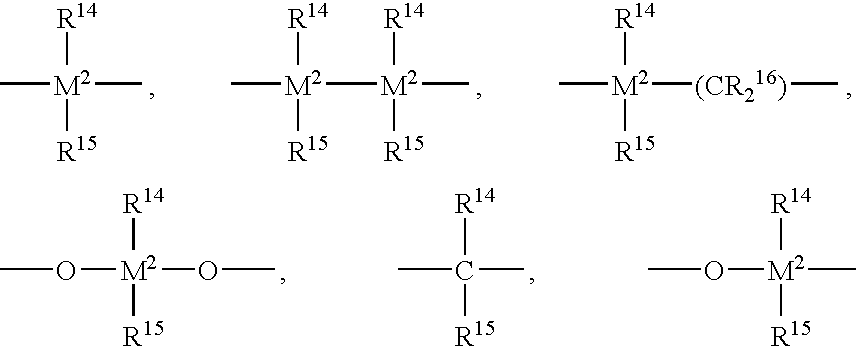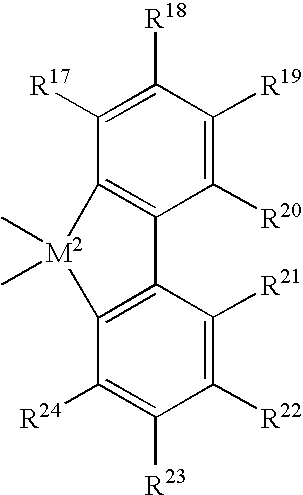Diene-modified propylene copolymers
a technology of propylene and propylene, which is applied in the field of propylene copolymer compositions, can solve the problems of poor melt strength of polypropylene, low draw-down ratio of extrusion coating, and poor bubble formation of extrusion foam materials, and achieve the effect of increasing catalyst activity
- Summary
- Abstract
- Description
- Claims
- Application Information
AI Technical Summary
Benefits of technology
Problems solved by technology
Method used
Image
Examples
example 1
[0861] In the following example, various samples of polypropylene copolymers were formed using a metallocene catalyst. The properties of the samples are reflected in Table 1.
[0862] Each sample was formed using a supported metallocene catalyst. The metallocene catalyst used was dimethylsilylbis (2-methyl-4-phenyl indenyl) zirconium dichloride, purchased from the Boulder Scientific Company, with methylalumoxane (MAO) activator.
[0863] The metallocene catalyst was prepared by placing the metallocene catalyst in a 100-ml beaker to which the 30 wt % MAO solution was added. The mixture was stirred magnetically for 1 hr. and was diluted with 10 g toluene. Five grams of Davison MS952 silica, pre-calcined at 600.degree. C. was placed in a 250 ml beaker separately. One-fourth of the metallocene mixture was added to the silica and the resulting mixture was stirred manually to homogeneity and uniform color. The rest of the metallocene mixture was also added to the silica as above to achieve a mo...
example 2
[0866] In the following example, various samples of polypropylene copolymers were formed using a metallocene catalyst. The properties of the samples are reflected in Table 2.
[0867] Each sample was formed using an unsupported metallocene catalyst. The metallocene catalyst used was dimethylsilylbis(2-methyl-4-phenyl indenyl)zirconium dichloride, purchased from the Boulder Scientific Company, with methylalumoxane (MAO) activator.
[0868] Sample 5 is a polypropylene homopolymer. Sample 6 is a polypropylene copolymer made from 400 ml of propylene (in 800 ml hexane) and 1 ml of 7-methyl-1,6 octadiene (MOD), purchased from Aldrich Co. Sample 7 is a polypropylene copolymer made from 400 ml of propylene (in 800 ml hexane) and 5 ml of MOD. Sample 8 is a polypropylene made from 400 ml propylene (in 800 ml hexane) and 1 ml 2-methyl-1,5-hexadiene (MHD), purchased from Aldrich Co. Sample 9 is a polypropylene made from 400 ml propylene (in 800 ml hexane) and 2 ml MHD.
[0869] The polymerizations were ...
example 3
[0872] In the following example, various samples of polypropylene copolymers were formed using a metallocene catalyst. The properties of the samples are reflected in Table 3.
[0873] Each sample was formed using a supported metallocene catalyst. The metallocene catalyst used was dimethylsilylbis(2-methyl-4-phenyl indenyl)zirconium dichloride, purchased from the Boulder Scientific Company, with methylalumoxane (MAO) activator. The metallocene catalyst was prepared by placing the metallocene catalyst in a 100-ml beaker to which the 30 wt % MAO solution was added. The mixture was stirred magnetically for 1 hr. and was diluted with 10 g toluene. Five grams of Davison MS952 silica, pre-calcined at 600.degree. C. was placed in a 250 ml beaker separately. One-fourth of the metallocene mixture was added to the silica and the resulting mixture was stirred manually to homogeneity and uniform color. The rest of the metallocene mixture was also added to the silica as above to achieve a mobile slu...
PUM
| Property | Measurement | Unit |
|---|---|---|
| volume percent | aaaaa | aaaaa |
| volume percent | aaaaa | aaaaa |
| volume percent | aaaaa | aaaaa |
Abstract
Description
Claims
Application Information
 Login to View More
Login to View More - R&D
- Intellectual Property
- Life Sciences
- Materials
- Tech Scout
- Unparalleled Data Quality
- Higher Quality Content
- 60% Fewer Hallucinations
Browse by: Latest US Patents, China's latest patents, Technical Efficacy Thesaurus, Application Domain, Technology Topic, Popular Technical Reports.
© 2025 PatSnap. All rights reserved.Legal|Privacy policy|Modern Slavery Act Transparency Statement|Sitemap|About US| Contact US: help@patsnap.com



